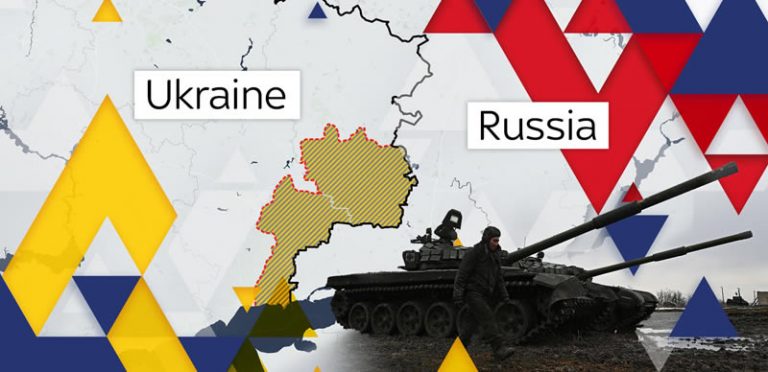by Inwalomhe Donald
SINCE 13th December, 2024, it appears, Russia has been losing the war in Ukraine even with the support of North Korean troops in the Kursk region. Russia has begged North Korea for her military support. Ukraine has pushed back Russian military forces with remote-controlled vehicles mounted with machine guns and kamikaze drones. Ukraine mounted its first robot-only assault on a Russian position pushing back military forces despite being heavily outnumbered. After nearly three years of war, Ukraine is arguably the world’s leader in military robotics. But the Ukraine’s innovation is, in part, an answer to its desperation—that is, its struggles to recruit enough human soldiers to match the Russians person-for-person.
Russia has made Ukraine the world’s leader in military robotics because military robots have become useful and efficient on the war front. I am talking about dozens of units of robotic and unmanned equipment simultaneously on a small section of the front,” a spokesperson for the 13th National Guard Brigade has explained robotic usefulness in the war front. It was an impressive technological feat—and a worrying sign of weakness on the part of overstretched Ukrainian forces. Unmanned ground vehicles in particular suffer profound limitations, and still can’t fully replace human infantry.
That the 13th National Guard Brigade even needed to replace all of the human beings in a ground assault speaks to how few people the brigade has compared to the Russian units it’s fighting. The 13th National Guard Brigade defends a five-mile stretch of the front line around the town of Hlyboke, just south of the Ukraine-Russia border. It’s holding back a force of no fewer than four Russian regiments. That’s no more than 2,000 Ukrainians versus 6,000 or so Russians. The manpower ratio is roughly the same all along the 800-mile front line of Russia’s 34-month wider war on Ukraine. Russian troops still greatly outnumber Ukrainian troops, despite the Russians suffering around twice as many casualties as the Ukrainians since February 2022. The Ukrainian robotic military operation involved remote-controlled flying surveillance
and mine laying drones, one-way explosive robots on the ground and in the air as well as gun-armed ground ’bots. This is the first robotic army infantry that Ukraine has introduced to the world. In what amounted to a smaller-scale proof of concept for the recent combined-arms robot assault, a Ukrainian ground robot cleared a Russian trench in Kursk Oblast in western Russian back in September. Russia has attempted small-scale ground ’bot assaults of its own, but less successfully.
Kyiv’s forces used dozens of remote-controlled vehicles mounted with machine guns as well as unmanned kamikaze drones in the raid near the Ukrainian-held town of Lyptsi, the Ukrainian military said. The assault also used aerial surveillance and mine-laying drones in supporting roles. Volodymyr Dehtiarov, a representative for Ukraine’s Khartiia Brigade, said: “We are talking about dozens of units of robotic and unmanned equipment simultaneously on a small section of the front.” With Kyiv struggling to overcome
crippling manpower shortages, its armed forces have often placed faith in experimental armed robots in an attempt to turn the tide of war. In some areas of the battlefield, Russia has a three-to-one advantage in manpower. Ukraine is known to have deployed vehicles with robotic machine guns, mine layers and electronic warfare systems which minimise human involvement on the battlefield. But the assault by the 13th National Guard Brigade is the first example of a robot-only combined-arms manoeuvre. The brigade is responsible for defending a five-mile stretch of the frontline near Hlyboke, a Russian-held town in the Kharkiv region, about five miles south of the border. Russia has four regiments attempting to advance in the area, meaning Ukraine is countering around 6,000 troops with just 2,000 men.
The problem, of course, is that while robots are adept at surveilling and attacking, they are terrible at holding. To hold ground, armies put infantry in trenches. They sit, watch, wait and call for reinforcements when the enemy attacks. It’s a tedious, taxing duty that requires constant vigilance. Constant vigilance is difficult when a human operator is remotely observing the battlefield through the sensors of a maintenance-hungry ground robot. Ukraine’s President Zelenskyy underscores the importance of ongoing operations and strategic assessments robot military in Donetsk and Kharkiv as
Kiev works to strengthen defences against Russian aggression. President Zelenskyy said there had been “significant” improvements in supplies to the front line by Kiev’s partners. “There have been significant improvements in partner supplies to the frontline, with an increase in deliveries under support packages,” Zelenskyy said on X, following a meeting with the country’s military leadership.
Zelenskyy said the supply of artillery had also seen improvements, indicating that Defense Minister Rustem Umerov also gave a report on the supply of Ukrainian-made drones to the country’s military. “Approved delivery plans are being implemented, and I extend my gratitude to all manufacturers involved. I have instructed the Minister of Defense to further increase orders for Ukrainian drones to support our relevant operations,” he further said. He also said that the meeting provided a detailed assessment of the situation on the front line, giving high priority particularly to the Pokrovsk, Kurakhove, Toretsk, and Kupiansk fronts in the
Donetsk and Kharkiv regions. He added that a separate report was made concerning Ukraine’s ongoing incursion in Russia’s border region of Kursk. In August, Ukrainian forces entered the Kursk region near the town of Sudzha, approximately 10 kilometres (6.2 miles) from the border, with the aim to create a “buffer zone” to protect against cross-border attacks from Russia.
Donald writes via inwalomhe.donald@yahoo.com In this article:

